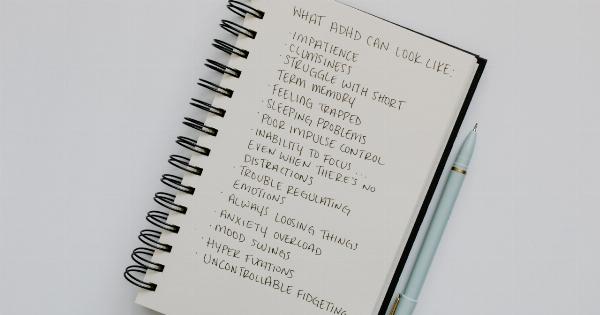Obsessive-compulsive disorder (OCD) is a mental health condition that affects millions of people worldwide.
It is characterized by persistent, unwanted thoughts, impulses, or images (obsessions) that cause intense anxiety and distress, and repetitive, ritualistic behaviors (compulsions) aimed at reducing this anxiety. OCD can significantly impair an individual’s daily functioning and quality of life. Understanding the signals of OCD is crucial for early detection and effective treatment. Here are six common signals of obsessive-compulsive disorder:.
1. Intrusive Thoughts
One of the hallmark signs of OCD is the presence of intrusive thoughts. These thoughts often involve irrational fears or worries that repeatedly enter a person’s mind.
They can be disturbing, violent, or sexually explicit in nature, and may go against an individual’s moral or ethical beliefs. People with OCD often feel ashamed or guilty about these thoughts but have difficulty controlling or stopping them.
2. Compulsive Behaviors
Compulsive behaviors are repetitive actions or rituals that individuals with OCD feel compelled to perform in response to their obsessive thoughts. These behaviors are typically aimed at reducing anxiety or preventing a feared outcome.
Common compulsions include excessive hand washing, checking locks repeatedly, arranging objects in a specific order, or counting objects without reason. Despite offering temporary relief, these behaviors often provide no practical value.
3. Fear of Contamination
A significant proportion of individuals with OCD experience an intense fear of contamination. They are excessively concerned about germs, dirt, or harmful substances on their bodies or in their surroundings.
This fear often leads to excessive hand washing, avoiding public places, or using gloves to touch objects. The fear of contamination can significantly disrupt daily routines and social interactions, causing distress and isolation.
4. Symmetry and Orderliness
Many people with OCD have an overwhelming need for symmetry, order, and precision. They may spend excessive amounts of time arranging objects or aligning them perfectly.
Any disruption to this symmetry can cause anxiety and require them to repeat the actions until they feel the balance has been restored. This obsessive need for orderliness can interfere with productivity, relationships, and personal well-being.
5. Hoarding Tendencies
Hoarding tendencies are a common manifestation of OCD. Individuals with this particular compulsion find it challenging to discard possessions, regardless of their practical value.
They often accumulate an excessive amount of items, leading to cluttered living spaces, safety hazards, and unsanitary conditions. Hoarding behaviors can cause significant distress and may isolate individuals from their loved ones.
6. Checking and Reassurance Seeking
Individuals with OCD often have an intense need to repeatedly check things or seek reassurance.
Whether it’s checking if the door is locked, repeatedly calling loved ones while they are away, or constantly reviewing work for errors, these behaviors provide temporary relief from anxiety. However, the relief is short-lived, and the compulsion to check or seek reassurance becomes a never-ending cycle.
Obsessive-compulsive disorder is a serious mental health condition that requires proper diagnosis and treatment. If you or someone you know exhibits any of these signals, it is essential to seek professional help.
Effective therapies, such as cognitive-behavioral therapy (CBT) and medication, can significantly improve symptoms and enhance daily functioning.


























